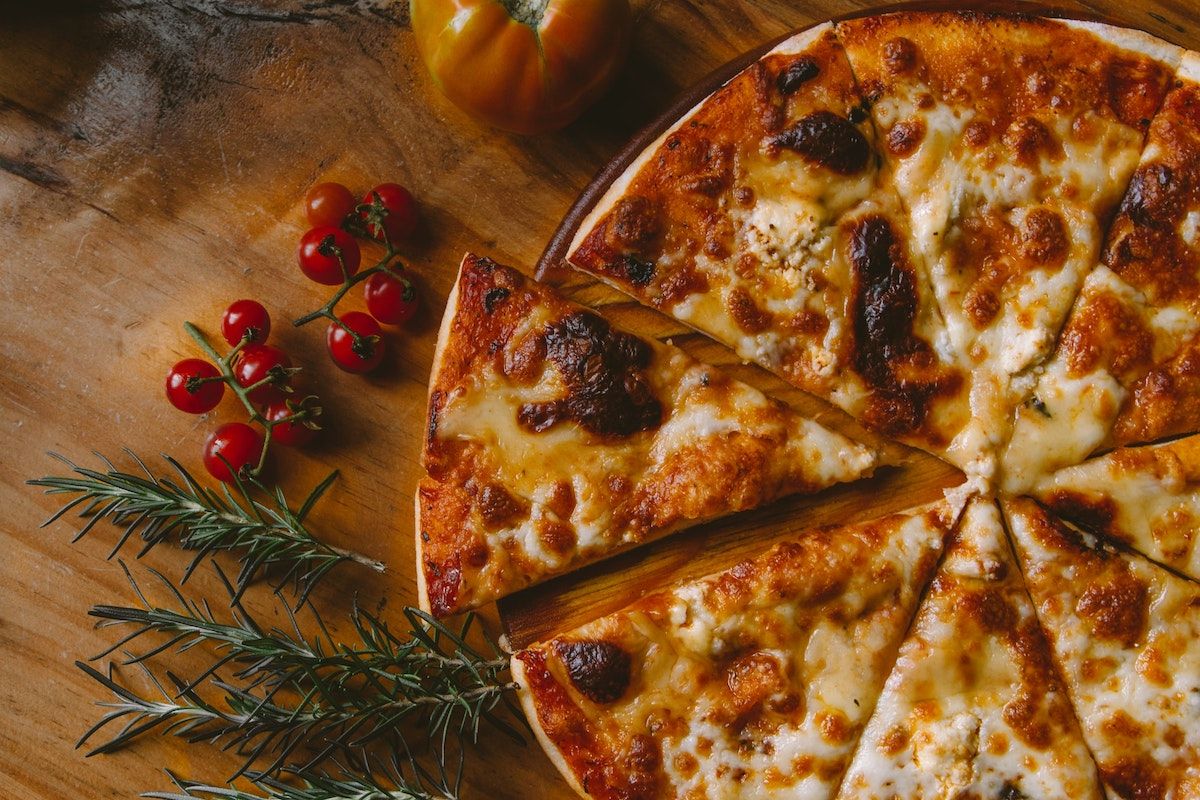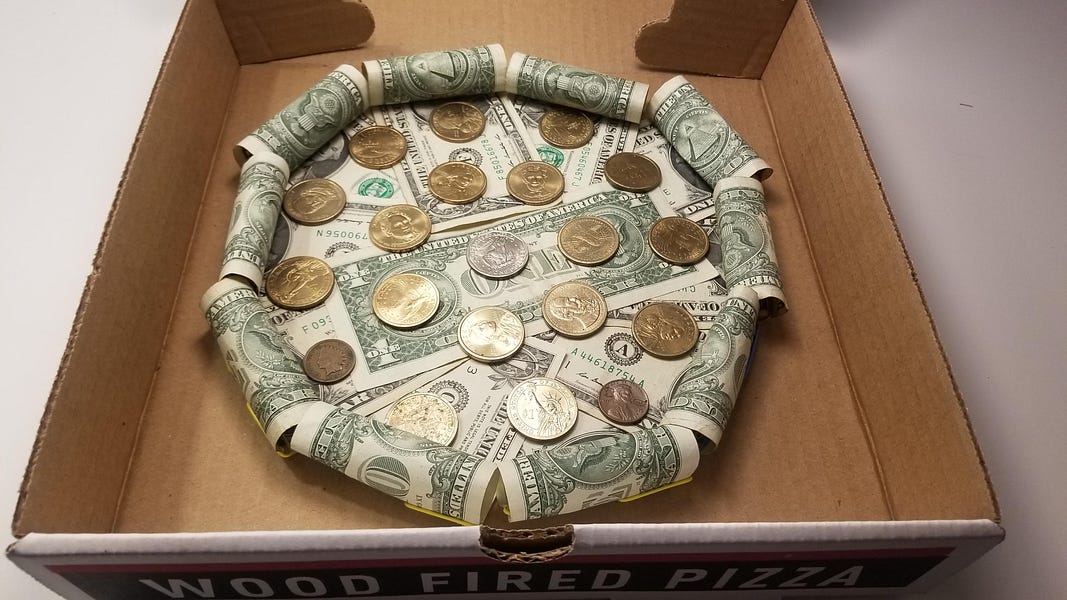A free lunch after all?
“A business as successful a Doordash and worth billions of dollars would clearly not just give away money like this.”

Capital Thinking • Issue #1077 • View online
If capitalism is driven by a search for profit, the food delivery business confuses the hell out of me. Every platform loses money.
Restaurants feel like they’re getting screwed. Delivery drivers are poster children for gig economy problems. Customers get annoyed about delivery fees.
Isn’t business supposed to solve problems?
Doordash and Pizza Arbitrage: There is such a thing as a free lunch
Last week’s Uber-Grubhub news set off some antitrust alarms for me and got me thinking about the business of food delivery as a whole. But let me start this newsletter with a story about Pizza Arbitrage.
Market Inefficiencies
In March 2019 a good friend who owns a few pizza restaurants messaged me (this friend has made appearances in prior Margins’ pieces).
For over a decade, he resisted adding delivery as an option for his restaurants. He felt it would detract from focusing on the dine-in experience and result in trying to compete with Domino’s.
But he had suddenly started getting customers calling in with complaints about their deliveries.
Customers called in saying their pizza was delivered cold. Or the wrong pizza was delivered and they wanted a new pizza.
Again, none of his restaurants delivered.
He realized that a delivery option had mysteriously appeared on their company’s Google Listing. The delivery option was created by Doordash.
To confirm, he had never spoken with anyone from Doordash and after years of resisting the siren song of delivery revenue, certainly did not want to be listed.
But the words “Order Delivery” were right there, prominently on the Google snippet.

He messaged me asking me if I knew anything about Doordash, and oh boy, did I get Softbank-triggered.
I had just read about their $400 million Series F and it was among the WeWorkian class of companies that, for me, represented everything wrong about startup evolution through the 2010s. Raise a ton of money, lose a ton of money, and just obliterate the basic economics of an industry.
Doordash was causing him real problems.
The most common was, Doordash delivery drivers didn’t have the proper bags for pizza so it inevitably would arrive cold. It led to his employees wasting time responding to complaints and even some bad Yelp reviews.
But he brought up another problem - the prices were off. He was frustrated that customers were seeing incorrectly low prices.
A pizza that he charged $24 for was listed as $16 by Doordash.
My first thought: I wondered if Doordash is artificially lowering prices for customer acquisition purposes.
My second thought: I knew Doordash scraped restaurant websites. After we discussed it more, it was clear that the way his menu was set up on his website, Doordash had mistakenly taken the price for a plain cheese pizza and applied it to a ‘specialty’ pizza with a bunch of toppings.
My third thought: Cue the Wall Street trader in me….. ARBITRAGE!!!!
If someone could pay Doordash $16 a pizza, and Doordash would pay his restaurant $24 a pizza, then he should clearly just order pizzas himself via Doordash, all day long.
You’d net a clean $8 profit per pizza [insert nerdy economics joke about there is such a thing as a free lunch].
He thought this was a stupid idea.
“A business as successful a Doordash and worth billions of dollars would clearly not just give away money like this.”
But I pushed back that, given their recent obscene fundraise, they would weirdly enough be happy to lose that money.
Some regional director would be able to show top-line revenue growth while some accounting line-item, somewhere, would not match up, but the company was already losing hundreds of millions of dollars.
I imagined their systems might even be built to discourage catching these mistakes because it would detract, or at a minimum distract, from top-line revenue.
So we put in the first order for 10 pizzas.
The Numbers
He called in and placed an order for 10 pizzas to a friend's house and charged $160 to his personal credit card. A Doordash call center then called into his restaurant and put in the order for those 10 pizzas. A Doordash driver showed up with a credit card and paid $240 for the pizzas.
It worked.
Trade 1
We went over the actual costs. Each pizza cost him approximately $7 ($6.50 in ingredients, $0.50 for the box). So if he paid $160 out of pocket plus $70 in expenses to net $240 from Doordash, he just made $10 in pure arbitrage profit. For all that trouble, it wasn't really worth it, but that first experiment did work.
My mind, as a combination trader and startup person, instantly had the though - just run this arbitrage over and over. You could massively even grow your top-line revenue while netting riskless profit, and maybe even get acquired at an inflated valuation :) He told me to chill out. Maybe this is why he runs an "actual business" while I trade options while doing brand consulting and writing newsletters.
But we did realize, if you removed the food costs this could get more interesting.
Trade 2
The order was put in for another 10 pizzas. But this time, he just put in the dough with no toppings (he indicated at the time dough was essentially costless at that scale, though pandemic baking may have changed things).
Now suddenly each trade would net $75 in riskless profit ⇒ $240 from Doordash minus ($160 in costs + $5 in boxes).
This got a bit more interesting. If you did this a few times a night, you could start to see thousands in top-line growth with hundreds in pure profit, and maybe you could do this for days on end.
So over a few weeks, almost to humor me, we did a few of these "trades". I was genuinely curious if Doordash would catch on but they didn't. I had visions of building a network of restauranteurs all executing this strategy in tandem, all drinking from the Softbank teat before the money ran dry, but went back to work doing content strategy stuff.

What is it about the food delivery platform business? Restaurants are hurt. The primary labor is treated poorly. And the businesses themselves are terrible.
This Business Insider piece did a good job covering the problematic dynamics of the industry:
As this conflict comes to a boil, one thing is becoming clear: there are no winners in this fight.
Restaurant owners are losing money. Diners are seeing their costs raised, either by delivery companies that need to pay delivery drivers or by the restaurant owners who raise prices to offset delivery fees. And delivery drivers still make low, unpredictable wages frequently with no benefits.
How did we get to a place where billions of dollars are exchanged in millions of business transactions but there are no winners?
PS: Try reading through some of the comments.
Photo credit: Ivan Torres on Unsplash
